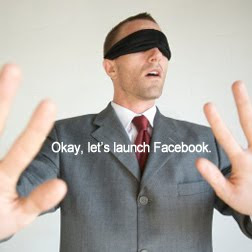
The New York Times detailed an interesting dilemma for La-Z-Boy. It seems the company best known for recliners is struggling with non-recliner sales.
The company's solution is to push a "we're more than recliners" message with spokeswomen Brooke Shields. One of the ad headlines is especially clunky: “When La-Z-Boy says ‘relax,’ it doesn’t necessarily mean ‘recline.’" The goal is to present a message of comfort, quality and family-friendliness and help break up the brand definition.
Can enviable brand recognition really be a liability?
Yes and no. Yes, it can be with La-Z-Boy, especially with the new campaign. And no, it didn't have to be if La-Z-Boy realized there was a much simpler solution, with or without Shields.
The challenge with the new campaign is that it invests considerable time conjuring up the old and powerful image, which reinforces the message supposedly holding them back. La-Z-Boy is most readily identified with a 1950s-60s-70s image of a head of household kicking everyone out of the recliner. Shields even says so in one spot, reinforcing it was "Dad's chair."
That image, even within the confines of storytelling, is powerful. It almost drowns out the rest of the message, which has Shields talking about her family, which isn't shown, enjoying her full line of La-Z-Boy furniture. The button cute ending has her muse about no one being able to kick her off the furniture now.
The spots, especially, aren't bad. Shields does a great job delivering authenticity with the lines. And, according to the article, the campaign will total at least $20 million, combining spending by La-Z-Boy and by furniture dealers. Ironically, however, this only constitutes a fraction of the total ad spend for La-Z-Boy, which will likely focus on recliners.
A different solution La-Z-Boy could have taken might have used Shields or not. It might have introduced a new sub-brand such as "Laurel by La-Z-Boy" (generic for the purposes of this post) and been paired with images of families. It might have been more effective, creating a bigger space between the original brand and the La-Z-Boy brand, while still capitalizing on the history and strong name recognition that owns recliners.
It could have also quelled the one authenticity-killing realization that despite Shields claiming a couch as her own, she is also married to several other shoots. It's hard to believe that she owns them all. It's even less convincing when you see the same setup in the product-only shoot.
La-Z-Boy Nostalgia Has The Mark Of Old School Marketing.
There is nothing wrong with La-Z-Boy as a company, despite what many might consider a high side price point. Still, it seems a complete strategic overhaul of its marketing is in order. It has all the right assets, with many of them being managed at a just above par level.
For example, you can order the furniture online, but the interface is an off-putting funnel approach for every product. (And some products are not available for online purchases.) The website has a 3-D room planner, which has potential for people with updated computers. It also has a construction primer worth checking out.
La-A-Boy also has fledgling social network efforts in play, with an emphasis on the most popular networks. However, the communication suggests the company isn't certain about what to do with these accounts. It's not bad, just basically bland (although they deserve props for promoting Ronald McDonald House). A blog would probably help their networks fine tune their content contributions and open up a better conversation.
The point is that Laz-A-Boy seems to have the right ingredients but it still seems separate with an obvious lean toward recliners. A refreshed plan could probably help reinforce furnishings much better than a traditional mass media marketing approach. In the meantime, it's worth watching as a living case study.









































